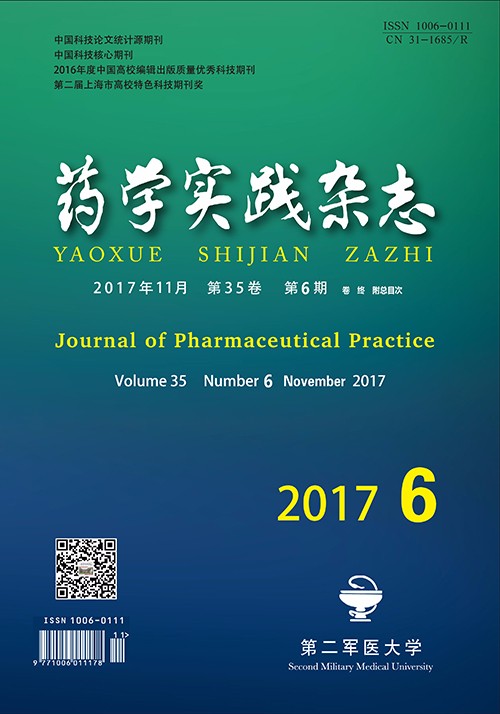WANG Hui, XIE Xinwei, LIU Zhengyue, YANG Zhangwei. Evaluation of the inpatient usage of intravenous infusion in 156 hospitals[J]. Journal of Pharmaceutical Practice and Service, 2017, 35(6): 573-576. doi: 10.3969/j.issn.1006-0111.2017.06.023
| Citation:
|
WANG Hui, XIE Xinwei, LIU Zhengyue, YANG Zhangwei. Evaluation of the inpatient usage of intravenous infusion in 156 hospitals[J]. Journal of Pharmaceutical Practice and Service, 2017, 35(6): 573-576. doi: 10.3969/j.issn.1006-0111.2017.06.023
|
Evaluation of the inpatient usage of intravenous infusion in 156 hospitals
- 1.
Department of Pharmacy, Changhai Hospital Affiliated to Second Military Medical University, Shanghai 200433, China
- 2.
Shanghai Tuo Fu Information Technology Co., Ltd., Shanghai 201204, China
- Received Date: 2016-07-21
- Rev Recd Date:
2017-09-07
-
Abstract
Objective To investigate the usage of intravenous infusion and the antibiotic intravenous infusion in different hospitals nationwide, and to evaluate the influence of the hospital bed number, hospital area and hospital grade on the clinical application of intravenous infusion. Methods Intravenous infusion volume, rate and other related indexes were analyzed based on the inpatient information obtained from the regional medical big data net for 156 hospitals. Results 1 323 852 inpatients were included in this study. 93.13% of those patients received intravenous infusion therapy. The average daily infusion volume was 782.67 ml per bed. The average infusion time was 7.39 days per patient. 44.78% of inpatients received intravenous antibiotic treatment. The average daily antibiotic infusion volume was 92.48 ml per bed. Conclusion Generally, the inpatient percentage of intravenous infusion was getting higher in China. The greater infusion volume in larger hospitals suggested that the patient's condition is relatively more serious in the larger hospital. The higher grade hospitals used smaller antibiotic infusion rate and volume, indicating the antibiotic use in high grade hospitals is relatively more standardized.
-
References
|
[1]
|
胡晋红.实用医院药学[M].上海:上海科学技术出版社,2000:329-330. |
|
[2]
|
张景龙.护理学基础[M].北京:人民卫生出版社,2000:243-244. |
|
[3]
|
吴安华,任南,文细毛,等.156家医院住院患者静脉输液的流行病学调查[J].中华流行病学杂志,2004,25(10):916-917. |
|
[4]
|
汪鹏,吴昊,罗阳,等.医疗大数据应用需求分析与平台建设构想[J].中国医院管理,2015,35(6):40-42. |
|
[5]
|
代涛.健康医疗大数据发展应用的思考[J].医学信息学杂志,2016,37(2):2-8. |
|
[6]
|
武星,汪滢,薛函.静脉输液类药物不合理医嘱点评情况分析[J].临床合理用药杂志,2016,9(7):102-103. |
|
[7]
|
吴月丽,许晨耘,陈克妮,等.临床科室静脉输液现状调查分析[J].海南医学,2013,24(14):2154-2155. |
|
[8]
|
吴文渊.抗菌药物专项整治对区域性门急诊静脉输液率控制的影响调查研究[J].吉林医学,2013,34(12):2294-2295. |
|
[9]
|
Ferenczi E, Datta SS, Chopada A. Intravenous fluid administration in elderly patients at a London hospital:two-part audit encompassing ward-based fluid monitoring and prescribing practice by doctors[J] Int J Surg,2007,5(6):408-412. |
|
[10]
|
廖邦华,王晗,廖虎,等,四川地区各级医院合理用药情况调查[J].中国循证医学杂志,2012,12(7):751-755. |
|
[11]
|
邹晓旭,张敏,赵露,等,我国抗菌药物临床应用专项整治情况调查与分析[J].中国医院管理,2014,34(2):10-12. |
-
-
Proportional views

-







 DownLoad:
DownLoad: